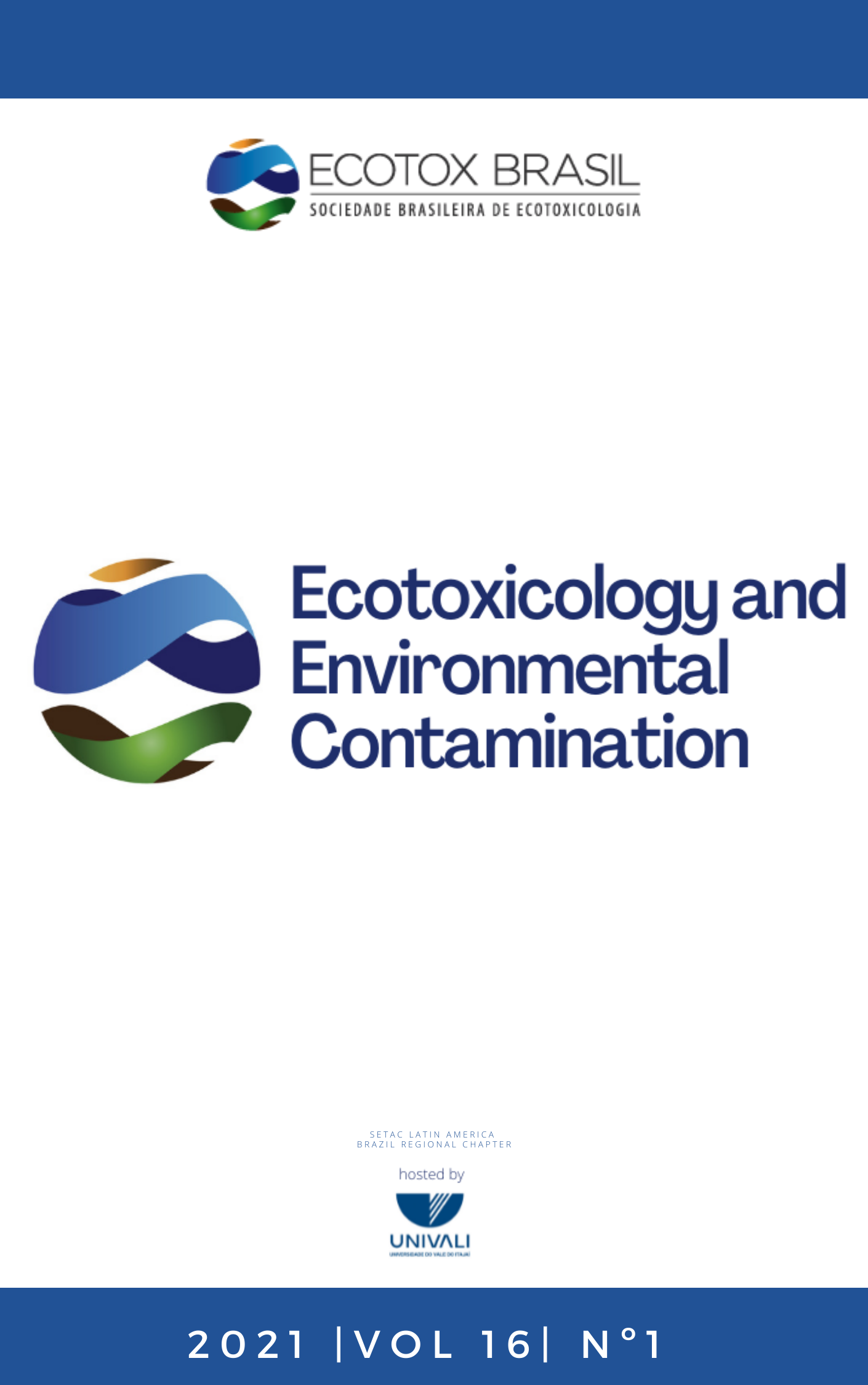Earthworm coelomocytes as a soil health assessment tool
DOI:
https://doi.org/10.5132/eec.2021.01.13Abstract
Different pollutants can disrupt earthworm coelomocytes integrity and functions, and their responses can be applied as biomarkers of sublethal contaminant exposure. In this context, the aim of this study was to develop an in vitro protocol for coelomocyte extraction, maintenance and analysis with regard to soil health status and chemical toxicity profile assessments. The extrusion technique was first tested comparing previously depurated (purged stomach content) and non-depurated and resampled earthworms. After testing, earthworms were exposed to different 2,4D and chloroacetamide concentrations for methodology validation. The values of viability were not affected by food restriction since no statistical difference was observed between non-depurated (sample A) and depurated (sample B) organisms. Regarding to cell density, a significant (p<0;05) reduction of 22% was observed between non-depurated and depurated organisms, indicating that food restriction may affect cell density. However, the non-depurated resampling did not show a significant reduction, indicating that this assessment may not be affect by resampling of the same organism. For both chemical compounds, no change in cell viability was observed at all assessed concentrations and exposure times. However, for cell density, a mainly time-dependent effect was observed for organisms exposed to chloroacetamide, and concentration-dependent effect for organisms exposed to 2,4D. The proportion of immune system cells was altered, mainly after 24 h, with the increasing of granular amoebocytes proportion. The difference in the proportion of granular amoebocytes in earthworms exposed to 2,4D can be explained by the existence of recognition and elimination mechanisms for this chemical substance. Thus, assessments of pollutant responses with in vitro coelomocytes seem to be a powerful tool for ecotoxicological studies.Downloads
Downloads
Published
How to Cite
Issue
Section
License
Copyright (c) 2021 Ecotoxicology and Environmental Contamination

This work is licensed under a Creative Commons Attribution 4.0 International License.
Copyright © 2006 ECOTOX-Brasil
Copyright notice: It is a condition for publication that manuscripts submitted to this journal have not yet been published and will not be simultaneously submitted or published elsewhere. By submitting a manuscript, the authors agree that copyright for their article is transferred to the Sociedade Brasileira de Ecotoxicologia (ECOTOX-Brasil) if and when the article is accepted for publication. The copyright covers the exclusive rights to reproduce and distribute articles, including reprints, photographic reproductions or any other reproduction of a similar nature, including translations. No part of this publication may be reproduced, stored in a retrieval system or transmitted in any form or by any means, electronic, mechanical, photocopying, recording or otherwise, without permission of the publisher.
Notice: While every effort is made by the EEC, editors and editorial board to see that no inaccurate or misleading data, opinions or statements appear in this journal, they wish to make it clear that the contents of the articles and advertisements published herein are the sole responsibility of the contributors or advertisers concerned. Accordingly, the EEC, the editorial board and editors and their respective employees, officers and agents accept no responsibility or liability whatsoever for the consequences of any inaccurate or misleading data, opinion or statement.




